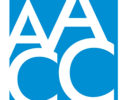Report roundup
By AACC 21st Century Center Staff
August 23, 2018
A monthly roundup of reports of interest to the community college sector.
Here are three reports you should know about this month.
- The National Student Clearinghouse Research Center is out with its third report on transfer and mobility. This one examines multiple transfer pathways for the cohort of students who started college in fall 2011. Nearly 1.5 million students of the fall 2011 cohort were served by two-year institutions, including those who started in two-year institutions and those who transferred. This means that “two-year institutions not only served most of the starting cohort, but most of the transfer population as well,” according to NSC. Only 5.6 percent of the cohort transferred after receiving a credential from their starting institution, either a certificate or an associate degree. Most transferred without a degree. Other findings: “The primary transfer destination for two-year starters was a four-year institution (50.5 percent of transfers). For four-year starters, the primary transfer destination was a two-year institution (59.2 percent of transfers), though more than a third of those were “summer swirlers” — students who transferred from four-year institutions to community colleges for the summer and returned to their starting institution in the fall term.
- A new Third Way report examines student loan repayment gaps between college completers and non-completers. Not surprisingly, non-completers are more likely to default on their loan. At two-year institutions, nearly half of completers begin paying down their loan principal in year one, and more than two-thirds have done so by year seven. For those student borrowers who start at two-year institutions but never finish, more than half (55 percent) end up accruing interest on their original loan balance and owing more than they originally borrowed, even seven years after they left the institution. In comparison, in the four-year sector, about two-thirds of completers are able to begin making a dent in their loan principal after just one year, compared to about a third (35 percent) of non-completers. And in the for-profit sector, nearly half of all graduates still owe more than the amount they initially borrowed even seven years after earning a certificate or degree.
- What’s on the horizon for higher education? More cross-institution and cross-sector collaboration, redesigned learning spaces and more use of open educational resources, to name a few things. That’s according to the 2018 Horizon Report from EDUCAUSE and the New Media Consortium. In the near future, institutions will see more focus on measuring learning. Looking further out — five or more years — there will be a push to advance cultures of innovation. The report also looks at short-term and long-term challenges in higher education, and how technology will change on campuses.



